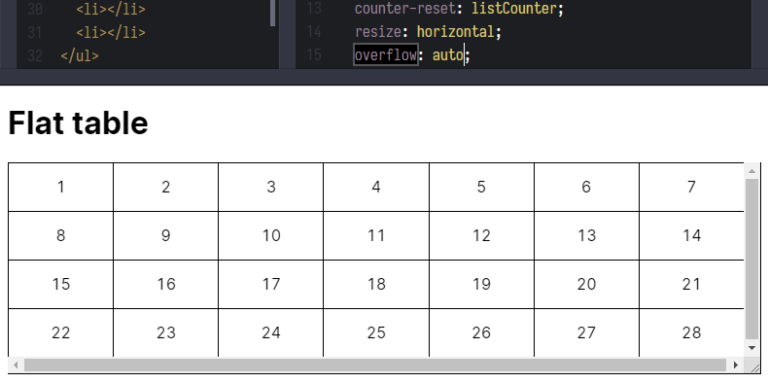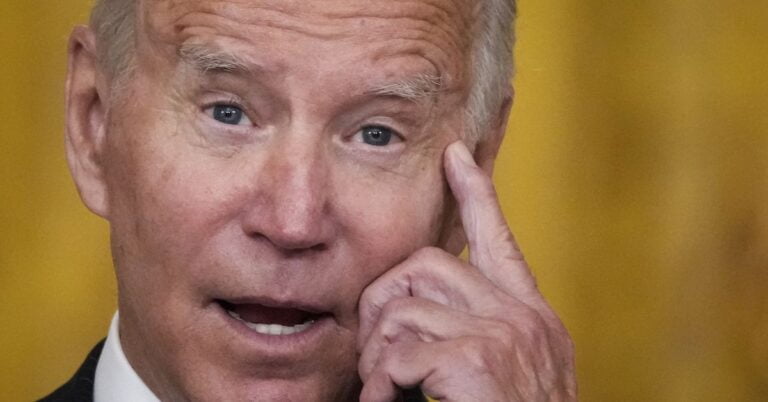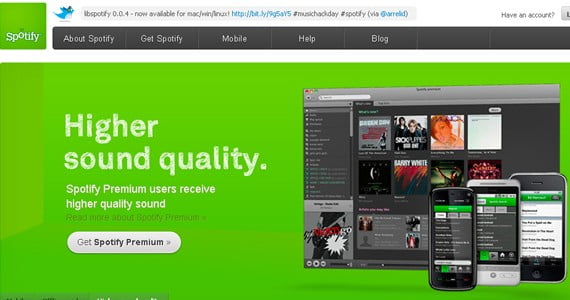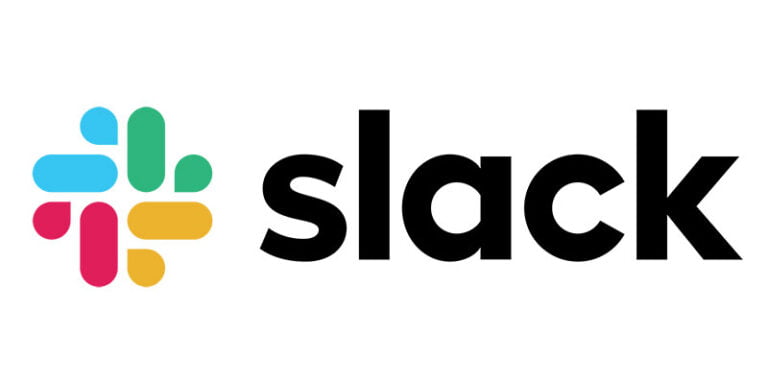Email marketing sequences are designed to help you engage your audience. You can set up email sequences for when someone signs up to your email list when they reach the checkout at your eCommerce store but fail to make a purchase and more.
In this guide, I’ve shared five email marketing sequences you should set up for your business. Before we dive into the examples, I want to discuss why you should be using email marketing sequences briefly. Let’s get started!
Why Should You Use Email Marketing Sequences
Table of Contents
Imagine manually sending welcome emails to every new customer or everyone who signs up to your mailing list. You wouldn’t have time for much else. Yet, it’s important to send a welcome email to a new subscriber. You need to introduce your business and set expectations with your new subscriber.
Email marketing sequences automate essential interactions with your audience.
The ability to set up email marketing sequences based on your audience’s actions can increase company profits. Take the cart abandonment sequence, for example.
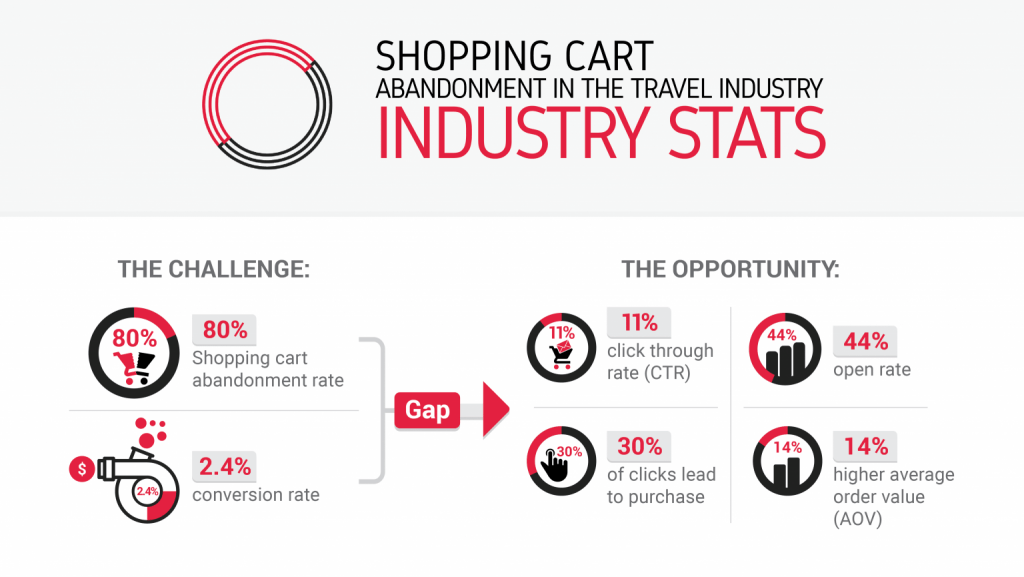

The average shopping cart abandonment rate is 80%. A cart abandonment sequence can engage those people who almost made a purchase but left your site. Those clicks from your campaign turn into profits.
The email sequences you set up will help you manage your relationships with your subscribers. You can set up email marketing sequences for every part of the customer journey.
How Many Emails Should Be in a Sequence
Email marketing sequences are effective. However, the longer the email sequence, the lower the rate of audience engagement. You can see the correlation in the data below from our Email Marketing Benchmark Report.
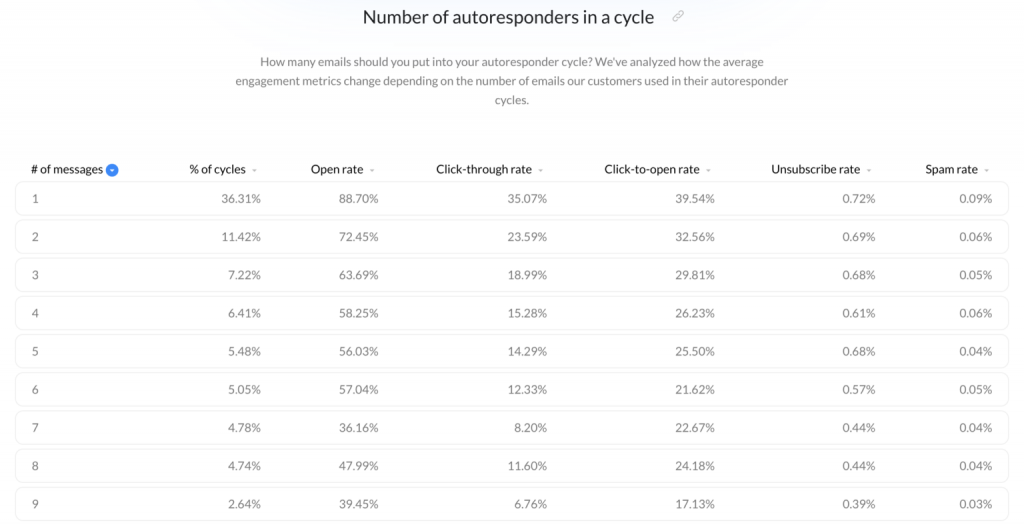

When you think about it, a lower rate of engagement over time makes sense. After all, your email marketing sequence should have a clear purpose.
You want short email sequences that provide value to your audience but don’t leave them feeling disengaged or spammed. For example, receiving two emails asking if you want to purchase a product you left in a shopping cart is probably ok.
Now, imagine receiving nine emails asking you to purchase something.
Clearly, that’s overkill.
I would immediately unsubscribe from any email list that sends me nine follow-up emails. The company would have gone from adding value to my inbox to being annoying.
If you’re just getting started with email marketing, set up a sequence with a maximum of three emails in your email marketing sequence. As you master email marketing, you can increase the number of emails in a sequence if you feel those extra messages are needed.
5 Email Marketing Sequences You Should Be Using
I’m sure you can see the value an email marketing sequence can have for your business. To stop you from feeling overwhelmed, I’ve listed five of the most important email sequences you should set up for your business.
I’ve provided an overview of each of the email marketing sequences. I discuss why each email sequence is essential. I’ll also provide you with an example of each sequence and share some additional tips. I hope you’ll find the insights valuable.
1. Welcome Email Sequence
The email welcome sequence is your first interaction with someone who has joined your list. It is one of the most important email sequences that you’ll set up because it sets the tone and expectations for the rest of your communication.
Your welcome email sequence should establish:
- Who – background information about you or your company.
- What – establish expectations. For example, what content you’ll share.
- Why – establish why they should care about your content.
- When – how frequently you will communicate with them.
I recommend sending a sequence of three emails over five days. For example, you send the first email immediately after they sign up to your list. Then, you send the second email two days later and a final email two days after that.
Below is an excellent example of an induction email from Airbnb:
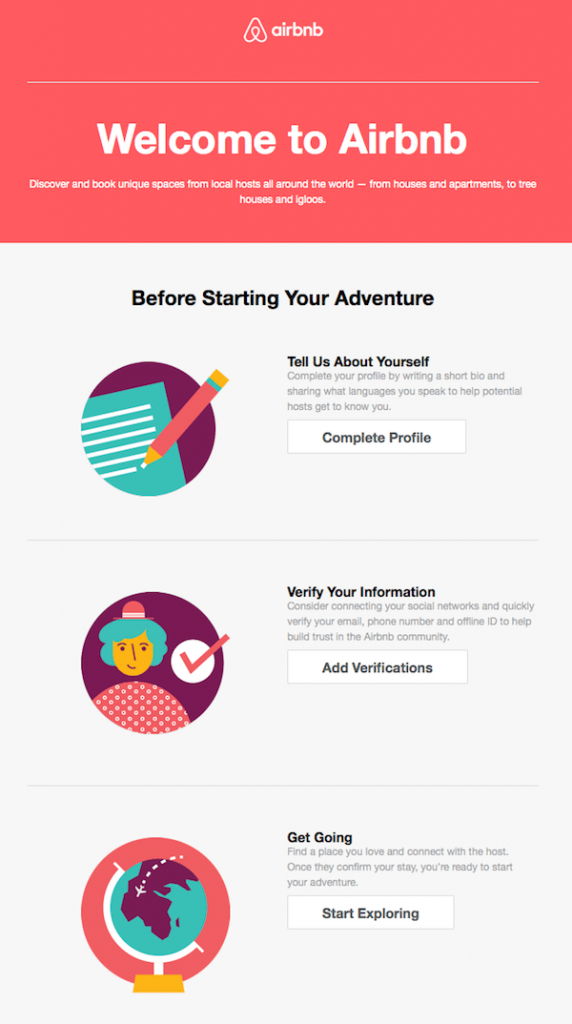

The first email in the welcome sequence from Airbnb gets the customer to engage with the platform. They ask the recipient to do the following:
- Fill in their bio
- Verify their information
- Review rental options
Platforms like Airbnb know that if they get the user to engage on their platform, the subscriber is likely to become a customer.
Here’s an example of a complete welcome series from Lyft.
Lyft introduces themselves in the first email, and then they share a bit more about their services. The third email provides an overview of the app features. The final email shares information on their drivers, making the company more relatable and personal.
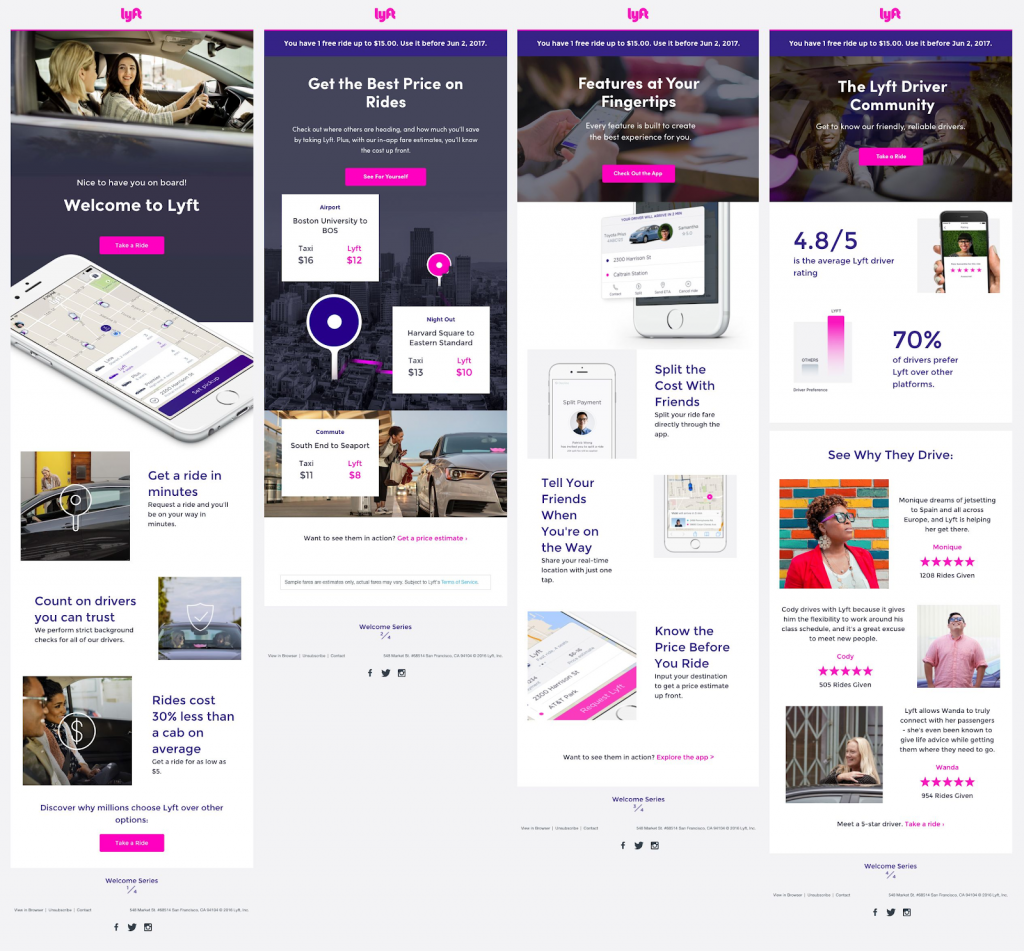

Hopefully, the examples I shared above should give you an idea of what type of content to include in your welcome email sequence. If you are running a blog, you might send an email asking your users to follow you on different social channels.
2. Cart Abandonment Sequence
One of the easiest ways to increase profits at an email store is to set up a cart abandonment email sequence. A cart abandonment sequence is a series of emails you send to a person who visited your website, added a product to the checkout cart, started to fill in their details, and then failed to follow through with the purchase.
The cart abandonment rate varies by niche and website. The image below from OptinMonster gives you a sense of some of the average cart abandonment rates by niche.
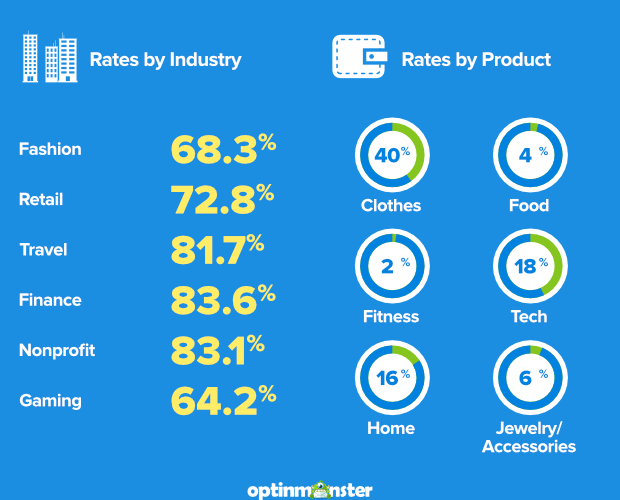

A cart abandonment email sequence can help you capture lost sales.
Below is an excellent example of an automated cart abandonment email from Adidas. You can see they’ve created a specific message for the product rather than a generic message for the store.
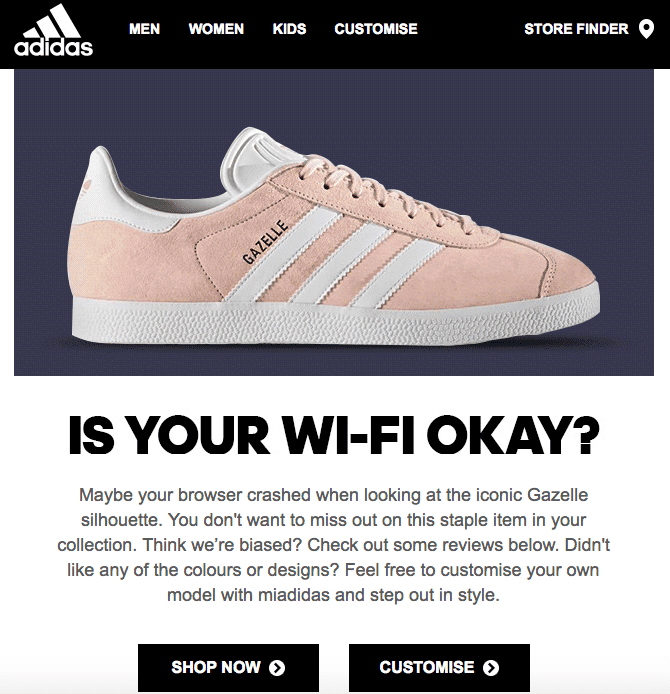

You should send your cart abandonment email within 48 hours of the person visiting your store. You can increase the chance of a conversion by providing a special offer. For example, 10% discount if you purchase now.
You’ll need to decide if a special offer is right for your store. If potential customers know they’ll get a 10% discount by email if they add a product to a cart and don’t make a purchase, many people will take advantage of this fact.
3. Upsell Email Sequence
You’ve probably heard a friend with bags of shopping say, “I only planned to buy X product.”
Customers buying more than they planned happens all the time. When a person purchases a product, they go into buying mode. For example, someone who bought a new coat might decide they need a new bag. A person will continue to buy products until they are satisfied – this is a natural part of the buying journey.
As an eCommerce store owner, you can take advantage of this human impulse by creating upsell email sequences for your customers. Below is an example of an upsell email from The Dollar Shave Club.
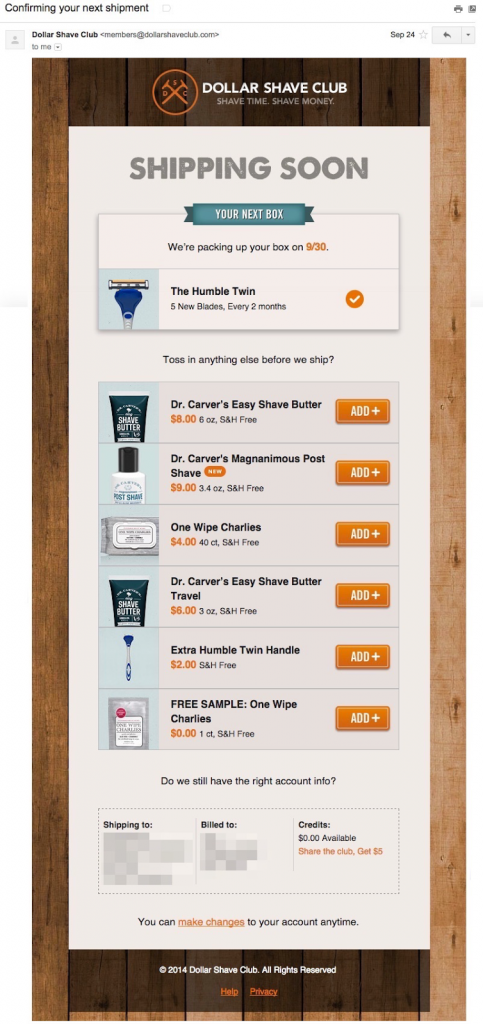

Dollar Shave Club has a monthly subscription model. The upsell email before delivery doesn’t feel intrusive. You can imagine It would be easy to set up an automated email like this for your customers.
4. Free Gift Sequence
Whether you are nurturing new leads or re-engaging existing customers, a gift always goes down well! People love to get a gift, and it incentivizes them to make more purchases. For example, a gift if you spend over $50 will encourage people to make larger purchases.
I recommend you set up an automated email sequence where you offer your audience a gift. For example, you could send customers a gift five days after they received your product.
The gift should be highly relevant to the interests of your customers. That could be a product that complements a recent purchase – such as buying beauty products and receiving a free makeup bag to store it in.
Here is an excellent example of a gift email designed. The email is part of an upsell or sales campaign.
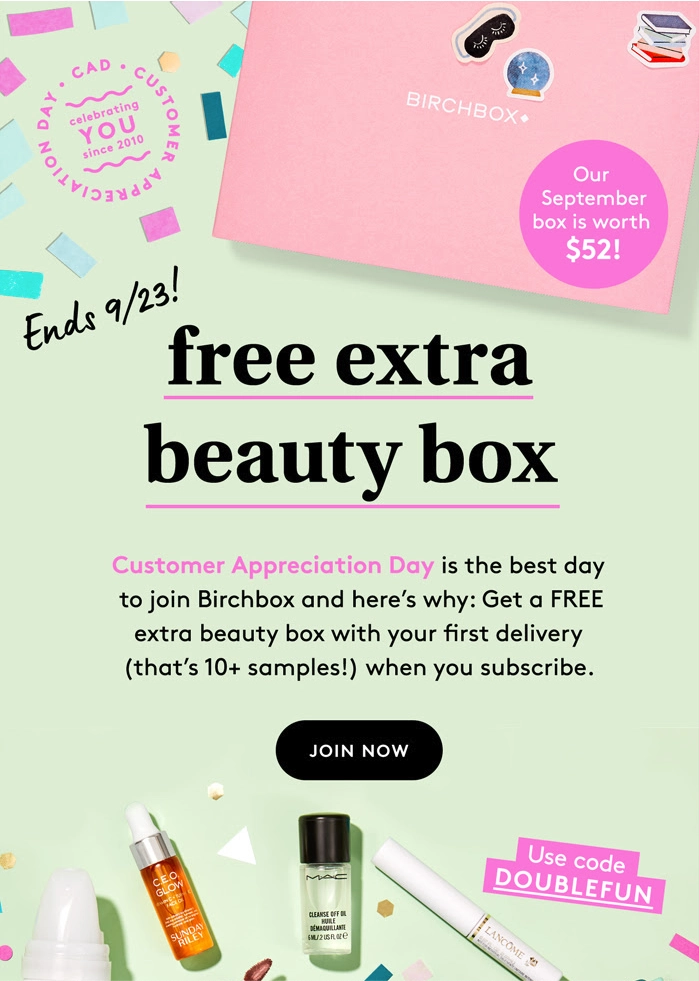

The gift email does not need to be linked to a purchase. You can offer a gift to your audience at any time. A gift is a great way to create goodwill with your audience and help maintain audience engagement.
5. Re-Engagement Sequence
There are a lot of important email marketing statistics that you can track. One of the most important is your email churn rate. Your email is the percentage of people who sign up to your email list and then either unsubscribe or stop engaging with your content.
The email churn rate varies by industry. There is also a significant variance between businesses.
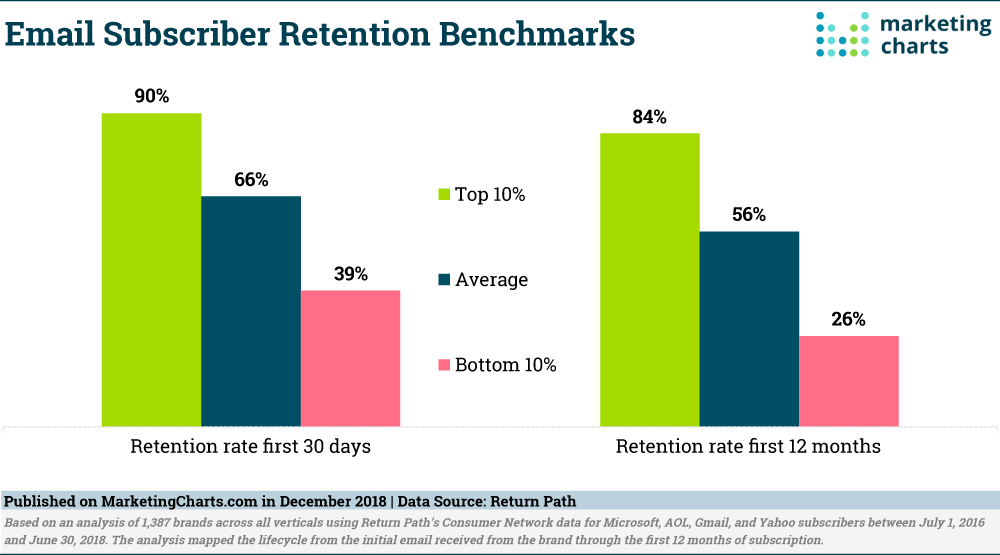

You want to do everything you can to reduce the percentage of people who either leave your list or stop engaging with your content. There are several ways to reduce your email churn rate. One of the most obvious and most important is to ensure that you only send valuable, relevant content to subscribers.
Only sending relevant and interesting content is the best way to decrease your email churn rate. There are other things you can do, though, to stop people from unsubscribing. One way you can do this is to set up a re-engagement email marketing sequence.
A re-engagement email sequence is activated when a person has failed to open a certain number of emails from you. For example, you might set up a re-engagement sequence for people who haven’t opened an email from your company in the last 90 days.
The email re-engagement sequence you create needs to engage a person who has been ignoring your emails. Some of the best ways to get these subscribers’ attention are special offers, discounts, and gifts.
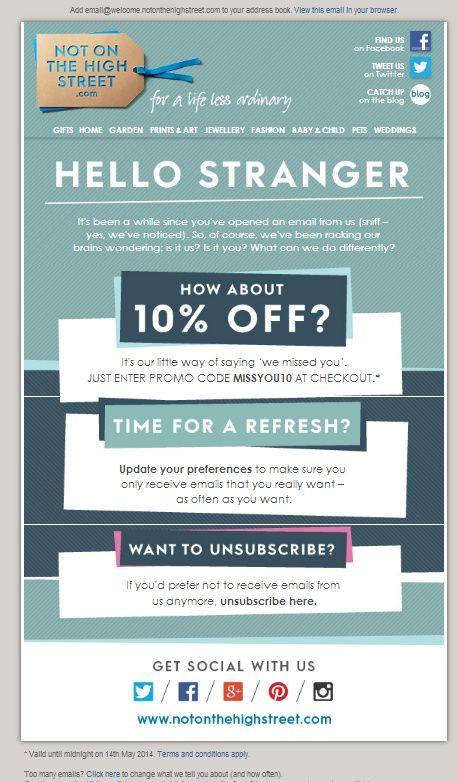

The example above from Not on the Highstreet is a great example of a re-engagement email.
The headline of the email is direct. The benefit to the subscriber is clear. Hopefully, that 10% off offer will incentivize the customer to take action.
If your re-engagement email fails to get the subscriber to take action, you should remove them from your email list. Inactive subscribers that don’t engage with your content will raise your spam score.
Summing Up
Email marketing sequences are an important part of any effective email marketing strategy. Automated email sequences, such as a “welcome sequence,” are an important part of the customer journey.
You can set up numerous sequences for your business. In this guide, I shared five necessary email sequences you should set up for your business. Arguably, the three most crucial email marketing sequences are the welcome sequence, the cart abandonment sequence, and the re-engagement sequence.
If you’re new to email marketing, start by setting up those three sequences I mentioned above. Monitor the campaigns’ results and implement changes to improve the open rate and Click Through Rates (CTR). As you get more confident, set up additional automated email marketing sequences for your business.
Photo by Andrew Neel on Unsplash

